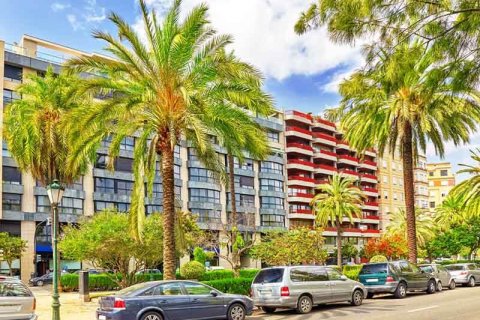
The pandemic has changed many consumer habits and trends. There have also been changes in housing due to quarantines and restrictions. In this regard, the priorities of real estate demands have changed as a new dynamic has come into play. Despite the existing problems, the secondary real estate market in Spain demonstrates a high degree of stability and price growth. At the same time, there is a reduction in the general cost of rent. Many real estate experts give positive forecasts and predict the recovery of the sector next year.
Contents:
- Secondary housing in Spain is getting more expensive
- Price stabilization
- Rent is getting cheaper
- New dynamics
- Types of popular real estate in Spain
- Forecasts for 2022
- Our assistance in buying real estate in Spain
Secondary housing in Spain is getting more expensive
The average price of secondary housing in Spain has increased by about 1% over the past year due to the pandemic and slow recovery while the cost of rent has decreased by almost 7%.
According to the portal Pisos.com, at the end of August, an increase of 1.83% was recorded compared to the previous year. Thus, the average price is 1853 euro per square meter. This is 1.83% more than a year earlier and 0.31% more than in July.
Fotocasa, another major real estate portal, also noted an increase in secondary housing prices. However, it was only 0.7% year-on-year in August.
In any case, this is the tenth consecutive year of growth in the market after 11 months of decline that started before the pandemic. This was from December 2019 to October 2020. Thus, according to the Fotocasa Real Estate Index, the price of secondary housing in August was EUR 1,890 per m2.
| The cost of secondary housing in Spain by month (April 2020-August 2021) | ||
|---|---|---|
| Month | Price (€/м²) | Annual indicator% |
| April 2020 | 1.854,00 € | -2,00% |
| May 2020 | 1.878,00 € | -1,10% |
| June 2020 | 1.874,00 € | -1,90% |
| July 2020 | 1.888,00 € | -0,70% |
| August 2020 | 1.877,00 € | -0,80% |
| September 2020 | 1.845,00 € | -2,4% |
| October 2020 | 1.859,00 € | -1,70% |
| November 2020 | 1.877,00 € | 0,70% |
| December 2020 | 1.846,00 € | 1,60% |
| January 2021 | 1.874,00 € | 1,80% |
| February 2021 | 1.883,00 € | 2,20% |
| March 2021 | 1.897,00 € | 2,90% |
| April 2021 | 1.888,00 € | 1,90% |
| May 2021 | 1.893,00 € | 0,80% |
| June 2021 | 1.883,00 € | 0,50% |
| July 2021 | 1.894,00 € | 0,30% |
| August 2021 | 1.890,00 € | 0,70% |
.jpg)
Price stabilization
In his report, Ferran Font, Director of Research Pisos.com, states, «The real estate market continues to cling to intermittent rises, drawing a horizon of sustainable growth that provides a high degree of sector stability».
According to Ferran Font, «prices for secondary housing are very reasonable. It has nothing to do with the overestimation that was observed 15 years ago. Besides, the level of interest rates is quite low. This is reflected in statistics, the growth of purchase, sale transactions and the increase in the number of mortgage loans».
His colleague, Maria Matos, says, «this data is a sign that property prices are on the threshold of stability».
The increase in prices for secondary housing was led by Madrid (5.71%). The lowest was recorded in the city of Huesca (-6.39 %). Donostia-San Sebastian was the most expensive administrative center while Jaen was the cheapest.
Among the autonomous communities, the most expensive are the Balearic Islands (EUR 3,224 per m2), Madrid (EUR 3,044 m2) and Basque Country (EUR 2,802 m2). The cheapest are Extremadura (EUR 802 m2), Castile – La Mancha (EUR 849 m2) and Murcia (EUR 1,034 m2).
Annually, the strongest prices were recorded in Madrid (5.71%), Castile-La Mancha (4.11%) and Murcia (3.08%). The largest declines were recorded in Asturias (-1.76%), La Rioja (-1.27%) and Aragon (-0.79%).
| The cost of secondary housing in the administrative centers of Spain, August 2021 | |
|---|---|
| Administrative center | Price, € |
| Avila | 1.156 € |
| Alicante | 1.627 € |
| Albacete | 1.445 € |
| Almeria | 1.310 € |
| Araba-Alava | 2.645 € |
| Asturias | 1.716 € |
| Badajoz | 1.371 € |
| Balearic Islands | 3.119 € |
| Barcelona | 4.372 € |
| Biscay | 3.353 € |
| Burgos | 1.687 € |
| Valencia | 2.107 € |
| Valladolid | 1.739 € |
| Guadalajara | 1.450 € |
| Gipuzkoa | 5.585 € |
| Granada | 1.888 € |
| Girona | 2.386 € |
| Cadiz | 2.528 € |
| Cantabria | 2.224 € |
| Caceres | 1.299 € |
| Castellon | 1.274 € |
| Cordoba | 1.485 € |
| Cuenca | 1.402 € |
| La Coruna | 2.322 € |
| La Rioja | 1.728 € |
| Las Palmas | 2.153 € |
| Leon | 1.493 € |
| Lleida | 1.172 € |
| Lugo | 1.440 € |
| Madrid | 3.899 € |
| Malaga | 2.431 € |
| Murcia | 1.340 € |
| Navarre | 2.518 € |
| Ourense | 1.559 € |
| Palencia | 1.517 € |
| Pontevedra | 1.799 € |
| Salamanca | 1.935 € |
| Samara | 1.308 € |
| Santa Cruz de Tenerife | 1.598 € |
| Zaragoza | 1.867 € |
| Seville | 2.102 € |
| Segovia | 1.714 € |
| Soria | 1.412 € |
| Ciudad Real | 1.240 € |
| Tarragona | 1.653 € |
| Teruel | 1.315 € |
| Toledo | 1.536 € |
| Huelva | 1.243 € |
| Huesca | 1.537 € |
| Jaen | 1.278 € |
Rent is getting cheaper
According to the Idealista portal, while prices for secondary housing continue to grow, the average rental price in Spain decreased by 6.7% year-on-year in August. It dropped to EUR 10,7 per m2.
This statistic is related to the decline in real estate prices in Catalonia (-8.2 %), Madrid (-8.1 %) - remaining the most expensive autonomous community (EUR 13.8 per m2) - the Balearic Islands (-4.7 %), Andalusia (-1.9 %), Valencia (-0.8 %) and the Basque Country (-0.3 %).
According to the Fotocasa portal, these declines show a change in the trend given that the price of rented real estate in Spain increased by 41% over the past 5 years and 32% over a decade. Thus, if in 2016 it was about EUR 592, this figure has now increased to EUR 835.
However, according to Maria Matos, «The upward trend has changed during 2020 and now the rental price has started to fall after many years of intensive rises».
New dynamics
Due to the changes caused by the pandemic, traditionally popular secondary housing is giving way to new construction.
Concepcion Sanchez, real estate specialist of Bellamar Agency in Malaga (Spain) states, «The interest in secondary housing is growing in certain areas where there is very high demand. The problem lies in offers. In many cases, this is scarce. This leads to prices for secondary housing increasing significantly in recent months. While there are very interesting offers and promotions in new construction, this makes it more competitive in price than secondary homes».

Types of popular real estate in Spain
Real estate with 2 and 3 bedrooms with terraces are the most popular. However, simple apartments with amenities are also popular in central areas. This is thanks to the variety of services close by.
Customer profiles also vary from young families with children who need more space to pensioners who prefer comfort and space.
Finally, if we look at the future of real estate, the forecasts are optimistic. Concepcion Sanchez explains, «People do not want to keep their savings in the bank as this involves paying commissions and no profit. Therefore, they prefer to buy, invest and rent out». As a result, the demand for real estate is growing, leading to good forecasts for the real estate market.
Forecasts for 2022
According to the National Institute of Statistics, real estate prices have largely withstood the onslaught of 2020, recording an increase of 1.5%. Even more surprising is that it survived despite a sharp decline in GDP (-10.8% in 2020).
In 2022, there will be a drop from 5% to 7%. However, this will not greatly affect new construction and secondary housing with a good location.
In 2021, real estate activity will recover, reaching an increase of 10%. This was largely because of the return of foreign investors to the Spanish real estate market. In 2022, the number of transactions will return to pre-pandemic levels.
In 2022, the number of transactions will reach 500,000. This is considered a stable medium-term indicator. Of this, 100,000 will be new housing and the rest being secondary housing.
At the end of last year, there was a drop in sales of up to 40%, mainly concentrated in the second quarter of the year. Significant recovery was seen since the beginning of the summer, showing a demand for new and secondary housing.
The outlook for 2022 is more positive as he predicts GDP growth stopping the cycle of falling prices and marking the beginning of a recovery.
.jpg)
Our assistance in buying real estate in Spain
Investing in Spanish real estate will ensure long-term capital, allow you to receive a stable income and provide unlimited opportunities for living and recreation in one of the most developed cities in the world.
You can get detailed recommendations and find answers to questions about buying a home in Spain on Spain-Real portal.Estate. Leading specialists with many years of experience will provide full support for any transaction. Select Spain-Real.Estate and your dream will come true!
